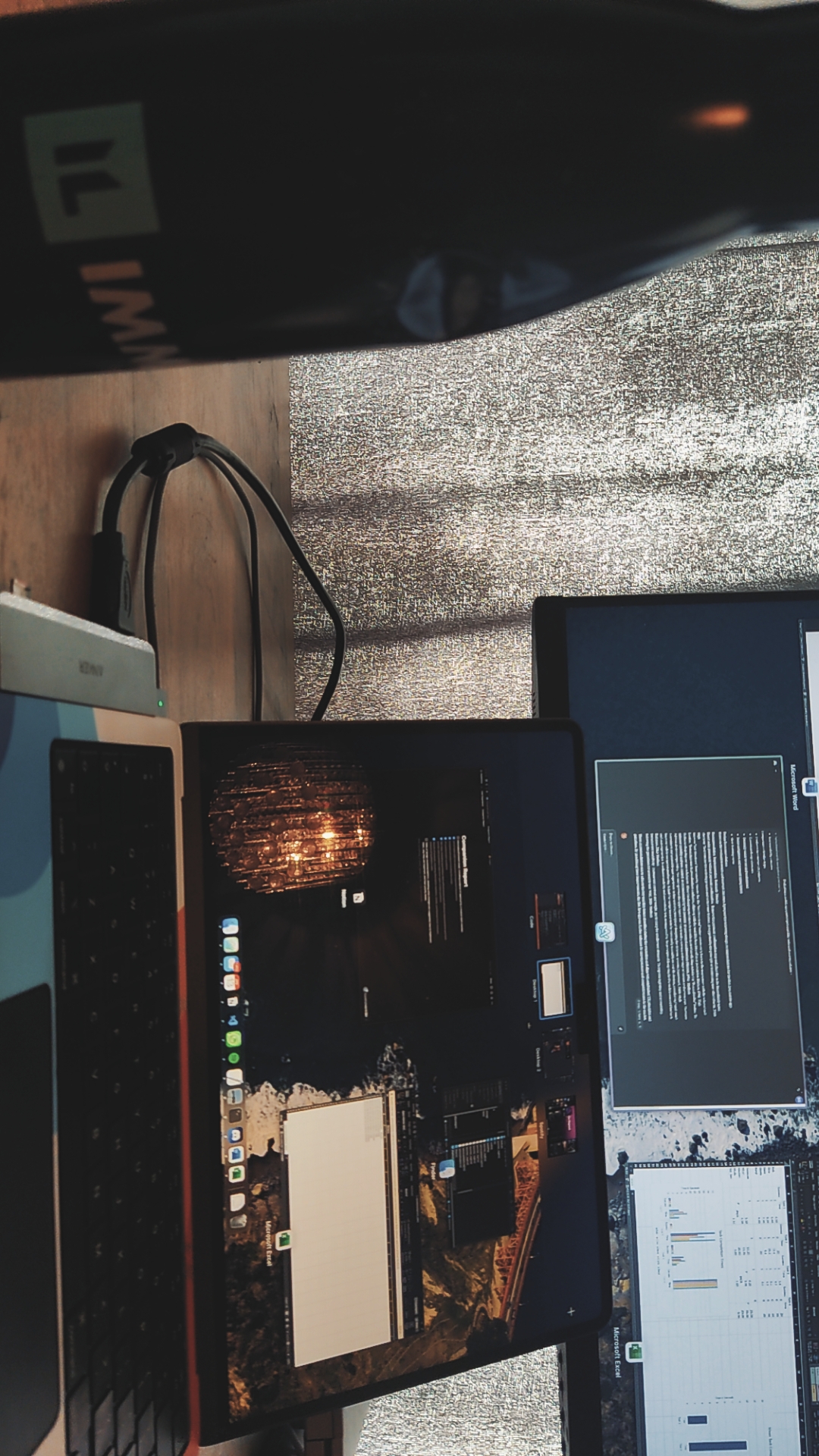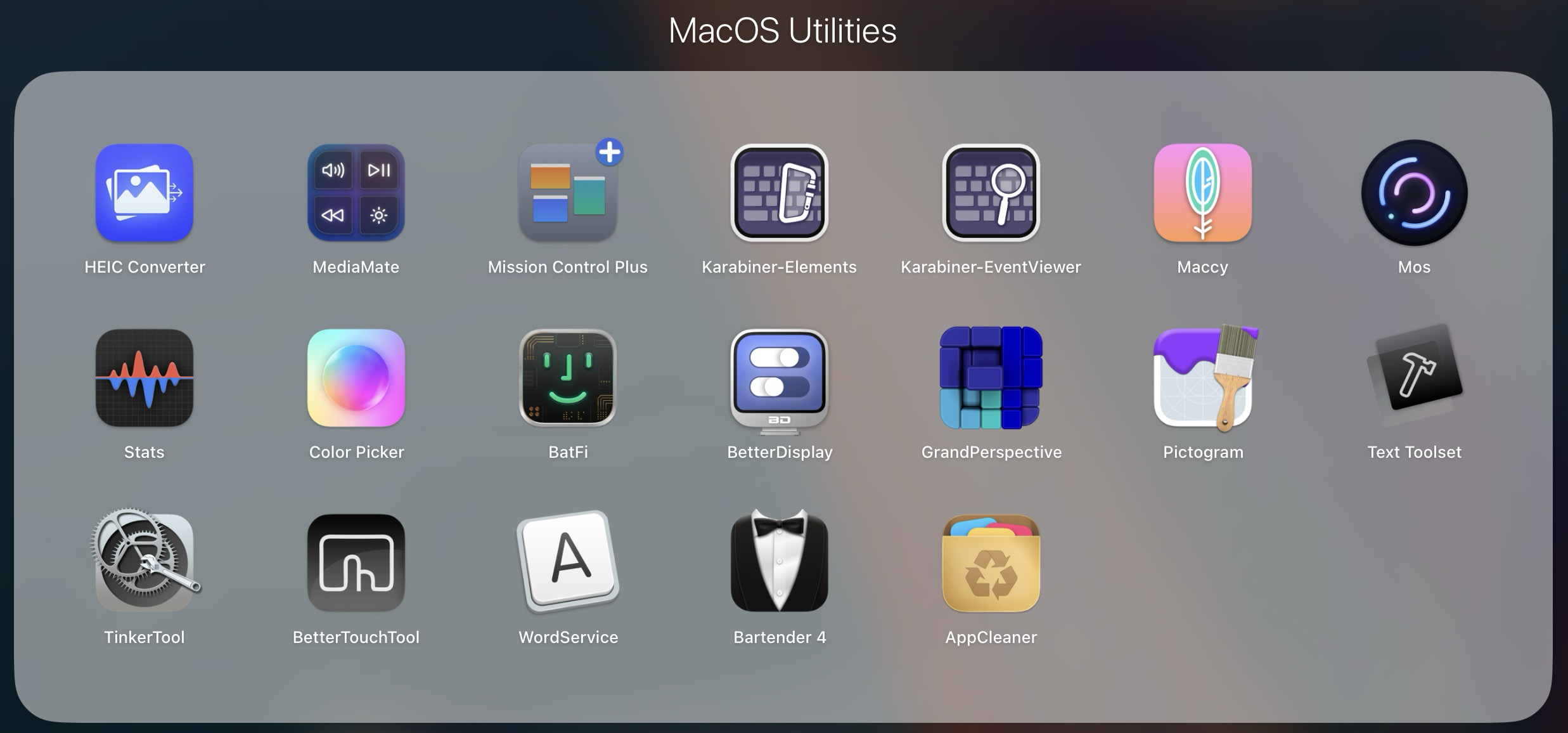My Experience With A Macbook
 Shaheer Sarfaraz
Shaheer SarfarazTable of contents

Hi. I'm Shaheer, a web developer studying Computer Science at UCLan. I want to write about my experience buying and owning a Macbook, after a life of exclusively using Windows devices.
I started my journey, like most, with a Windows laptop. I had a neutral to slightly negative stance on MacBooks because of their cost, and their comparatively lower on paper specs when compared to similarly priced windows laptops.
After being a windows user my entire computer journey, I decided to buy a MacBook, partly in part because of my previous machine being quite shit and in need of an upgrade, and partly because of this documentary on React by Honeypot.
This video introduced me to many incredibly skilled developers, true masters of their craft, upon whose backs millions of people have built their careers. I noticed something all of these developers had in common. Every single developer in the video was using a Macbook, and this got me thinking. There must be something about MacBooks if everyone's using one. And so began the month long research about MacBooks, and their variants. Their history, and their future. This research eventually led to me buying a "base model" (256gb, 8gb) MacBook Air M2.
I'm not going to try to convince you to get a macbook, because it's definitely not for everyone. If you want a one sentence summary it would be: "Get a MacBook if you are fine with a device that isn't guaranteed to 'just work'"
Great
RAW CPU POWER
The MacBook’s raw CPU power is nothing short of revolutionary. The move to ARM architecture with Apple’s M series chips has redefined thin-and-light laptop performance and efficiency. When it comes to web development or other demanding tasks, this machine handles everything without breaking a sweat. Builds are fast, hot reloads even faster, and the slowest part of the process is always you. It’s remarkable how the M2 chip’s performance scales: you can push it hard with complex builds, and it delivers consistently strong performance. Even apps running under Rosetta (Apple’s translation layer for x86 apps) often open and run faster than their native counterparts on comparable Windows machines.
One of the most astonishing aspects of the MacBook Air M2 is its efficiency. With lighter tasks, like browsing the web or watching videos, you can easily achieve up to 18 hours of battery life. This translates into an intuitive usage model: the harder you push the machine, the more power it delivers, the more power it uses, and the less the battery will last, but it also smartly manages its resources to provide exceptional battery life during lighter tasks. The ceiling for performance is raised, and the floor of power consumption is greatly lowered allowing the machine to do what I've seen no other machine do this effectively. This is a stark contrast to many Windows laptops, where unplugging often results in mediocre performance and limited battery life. If only it weren’t for the RAM limitation (more on this later), this machine would be an absolute powerhouse in every respect where I could safely say the machine can and will handle whatever I can throw at it. Nowhere in the process will the machine be the bottleneck.
Battery Life
The biggest improvement I was after was battery life. My previous laptop got me about 4-5 hours of screen on time, with lighter loads like youtube, or local video playback, and less than half this when actually working. This machine gets me easily 12 hours of SOT with active web development for at least 6 of those hours. Lighter loads like youtube playback, or local playback can see up to 18 hours of use. The efficiency gains with the M series chips are absolutely revolutionary.
Hardware Quality
The speakers on this device are really quite incredible. The bass is punchy even at low volumes, it gets loud enough, and the stereo separation is great too.
The trackpad is one of the best in its class—it's incredibly good. The clicks are perfectly clicky and very satisfying. You can even control the clicks using software (🤯) like BetterTouchTool. The biggest improvement is definitely the clicks; coming from a diving board-style trackpad, the difference is like night and day. Combine this with macOS's intuitive use of gestures, and it's a delight to use. It's so good that I barely use my external mouse (an MX Master 3S) anymore.
Good
MacOS
Cursor Movement
Cursor movement with command and option is far more intuitive to me compared to using control and home & end for cursor movement.
Here's how it works in macOS
command + left or command + right to go to the start or end of a line
option + left or option + right to skip words, to the left or right of the cursor
Compared to Windows
home for start of the line
end for the end of a line
control + left or control + right for word skipping
This is further complicated by different keyboards and manufacturers taking the liberty to place the home and end keys in different places on the keyboard, or behind function modifier keys, or omit them entirely. This means that any muscle memory you have on your specific laptop might not be transferrable to another machine.
Spaces
Spaces feel very natural and extremely well thought out. Though of course this is expected after decades of work being put into it. Full screen apps being their own space, and being able to swipe between them makes me feel like I have more room on my display than I actually do. It reminds me a bit of a more refined version of the OnePlus Open's fancy window management.
QOL
There's also a few quality of life improvements which were never mentioned in any review, and came to me as a pleasant surprise. Features like auto screen brightness, and a fingerprint scanner, and an actually decent keyboard backlighting which doesn't bleed too much all contribute to the experience of owning this machine.
Bad
Needing Many Apps for Simple Features
One of the most annoying aspects of macOS is the need for multiple third-party apps to achieve functionalities that should be native. Simple tasks like window management and customising the touchpad require additional software. For instance, while BetterTouchTool enhances the trackpad experience, it’s an added cost and complexity for something that should be a given. Below is a list of apps I have felt the need to install to satisfy my requirements from the machine
Utility Apps Often Being Paid
Following from the previous point, many of the useful utilities and enhancements on macOS are not free. You’ll find yourself paying for apps like BetterTouchTool, or MediaMate, and even Bartender. These costs add up and can be a burden if you’re coming from a Windows ecosystem where similar tools are often free or cheaper, likely due to the sheer number of users.
Software Support, Sometimes
Software compatibility can be a hit or miss. While most mainstream applications are well-supported, some niche or older software might not run properly or at all on macOS. This can be particularly problematic if your workflow relies on specific legacy software that hasn’t been updated to support the latest macOS version.
Ugly
Lack of Upgradability or Repairability
The lack of upgradability is a glaring issue with all MacBooks. Once you’ve made your purchase, you’re stuck with the hardware configuration you chose. There’s no opening it up to add more RAM or swap in a larger SSD. Additionally, repairability is a concern. Simple fixes often require professional intervention, which can be costly and inconvenient. This sealed-box approach significantly limits the longevity and adaptability of your investment, and really sours the whole experience, because you have to baby the device to make sure it stays out of harms way.
Needing to Restart Every Few Weeks to Keep Performance at Max
Despite the generally smooth performance of macOS, there’s an odd quirk where the system benefits from a restart every few weeks. Without it, the OS UI elements like the dock, and the mission control animations drop frames, slowing down to about 15fps. I would guess this is because of my machine always swapping for memory (more on this later). It’s a major hassle, and in a world where we expect our devices to ‘just work,’ it’s an annoying maintenance task.
The only things I've noticed are the WindowServer process takes up increasing space in the RAM, and at about the 2GB mark (suggesting a memory leak), the system elements start feeling slow. Another cause could be uptime, as this seems to only happen after 14 days of system uptime. The only fix I've found is to force quit the WindowServer process, or to restart the whole device, both of which completely quit all apps.
Emoji Keyboard Barely Functional
The emoji keyboard on macOS is, frankly, terrible. It’s slow, it's unresponsive, and feels like an afterthought rather than an integrated part of the system. I have to press the "globe" button multiple times for the emoji keyboard to appear, and when it does, the emoji picker itself is slow to navigate. With a device with such snappy performance otherwise, it feels like a real letdown that this very commonly used feature feels so half baked.
The Ugliest - The 8GB RAM Limitation
One of the most significant drawbacks of my base model MacBook Air M2 is the 8GB of RAM. The machine remains fast and responsive under light to moderate loads, it shows its limitations under more demanding usage scenarios. Here’s a closer look at how the 8GB spec impacts the machine:
Constant Yellow Memory Pressure
Even with basic apps open, such as Discord, Spotify, WhatsApp, and a web browser, the memory pressure indicator frequently hovers in the yellow zone. This indicates that the system is working hard to manage its limited RAM, often leading to increased use of swap memory. It’s concerning to see the system go 14GB into swap memory, with red memory pressure for sustained periods, signaling that the physical RAM is maxed out.
SSD Longevity Concerns
The heavy reliance on swap memory raises serious concerns about the longevity of the SSD. Constantly writing to and reading from the SSD will wear it out faster, potentially leading to premature failure. Given that the SSD is soldered onto the motherboard and cannot be replaced, this becomes a significant issue for the machine’s long-term durability.
Performance Bottlenecks
The limited RAM creates a bottleneck that prevents the CPU from reaching its full potential, which is something that irks me greatly. Tasks that should leverage the immense capabilities of the M2 chip are instead throttled by the RAM limitation. Running two different types of projects in different IDEs, such as something in Python in PyCharm and a web development project VSCode, becomes a juggling act, requiring careful management and low expectations. The machine often feels sluggish when switching between apps and contexts when so much is running, making it difficult to maintain a smooth workflow.
Usage Restrictions
Thus, this machine restricts what tasks can be performed on this specific device. Game development, although easily handled by the raw horsepower of the CPU, is restricted due to the RAM requirements of running Unity, and Visual Studio. Similar can be said for running Android Studio and the Android emulator. Again, this adds to the feeling that this machine needs to be babied to make sure it's only being given tasks that are within it's constraints, or more accurately, within the constraints of it's RAM.
Final Thoughts
Transitioning from a Windows laptop to a MacBook Air M2 has been an enlightening experience. While it has its drawbacks, particularly with the 8GB RAM limitation, the positives have been overwhelmingly impressive. The efficiency and power of the M2 chip, the remarkable battery life, and the quality of the hardware have transformed my daily workflow. MacOS has its quirks, but it also brings a level of polish and intuitive features that I have come to appreciate.
I’m not here to convince you that a MacBook is the best choice for everyone. It’s an investment and comes with its own set of challenges. However, if you’re a developer looking for a reliable, efficient, and well-crafted machine, the MacBook Air M2 is worth considering. Just remember, like any tool, it’s about how well it fits your needs and workflow.
For me, this machine has been a revelation. Despite my initial reservations, I’ve found a lot to love about the MacBook. It’s not perfect, but it’s pretty close to an ideal companion for my workflow. Whether you stick with Windows, switch to Mac, or explore other options, the most important thing is finding the right tools that enable you to do your best work.
Subscribe to my newsletter
Read articles from Shaheer Sarfaraz directly inside your inbox. Subscribe to the newsletter, and don't miss out.
Written by

Shaheer Sarfaraz
Shaheer Sarfaraz
I'm a Pakistani teenager with a passion for web development and automation
